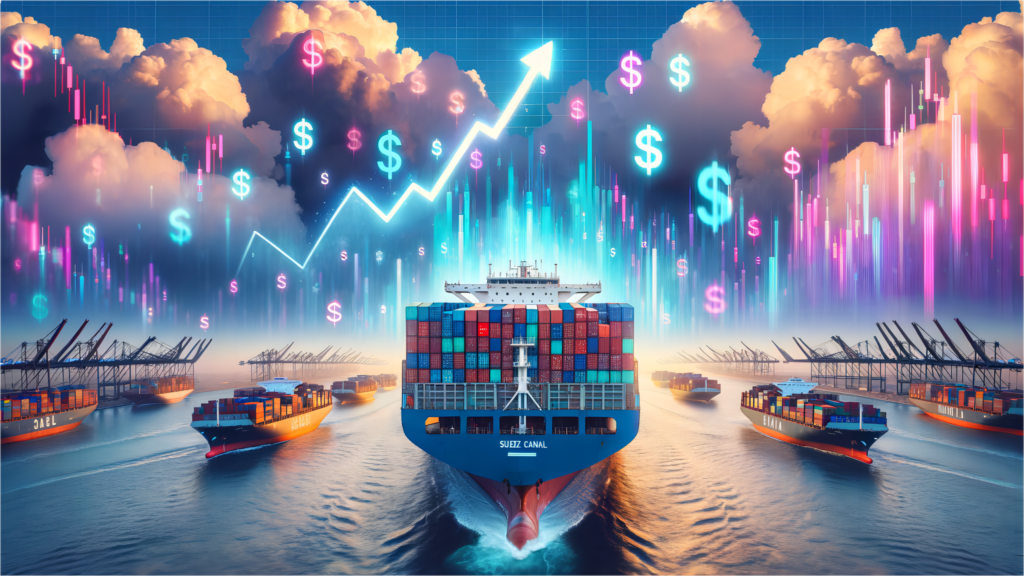- By TOP CHINA FREIGHT
- February 19, 2025
- News
In recent years, cross-border e-commerce has experienced explosive growth, reshaping the global trade landscape. As online shoppers increasingly seek products from different parts of the world, the demand for fast, reliable, and cost-effective shipping solutions has never been higher. However, this shift in global commerce raises an important question: How will freight systems adapt to meet the new challenges and demands of cross-border e-commerce?
How should we respond to the rise of cross-border e-commerce?

The Rise of Cross-Border E-Commerce
Cross-border e-commerce refers to the buying and selling of goods and services across international borders through online platforms. This sector has expanded rapidly due to factors like the rise of global digital marketplaces, easier access to international markets, and improvements in payment systems. The global nature of cross-border shopping has created an interconnected, fast-paced ecosystem that relies on efficient logistics and transportation networks.
As consumers from various countries continue to embrace cross-border shopping, businesses are under increasing pressure to ensure that their products are delivered in a timely, cost-effective manner. This trend is expected to accelerate in the coming years, as markets in Asia, Europe, and Latin America continue to experience growth.
The Key Challenges for Freight in Cross-Border E-Commerce
As the volume of cross-border e-commerce grows, several key challenges have emerged for freight and logistics providers:
1. Speed and Efficiency
Consumers expect fast delivery times, often with same-day or next-day shipping options. Meeting these expectations requires efficient freight solutions that can streamline international shipping processes, reduce delays, and optimize transit times.
2. Customs and Regulations
Navigating the complex web of international trade regulations, customs requirements, and tariffs can be daunting for freight providers. Ensuring that goods pass through customs smoothly and quickly is critical to avoiding delays and extra costs. Freight companies must have systems in place to handle paperwork, compliance, and real-time tracking.
3. Cost-Effective Shipping
While customers desire quick delivery, they also want affordable shipping options. Balancing shipping costs with speed and reliability is a challenge for freight providers, especially when dealing with the added complexity of international borders, which may involve multiple carriers, shipping methods, and fees.
4. Sustainability
With rising concerns about the environmental impact of shipping, sustainability has become a key priority for the freight industry. Businesses are under increasing pressure to reduce their carbon footprint, which may involve adopting greener shipping methods, optimizing routes, and embracing technology to improve efficiency.
How Freight Is Adapting to the Growth of Cross-Border E-Commerce
To meet the demands of cross-border e-commerce, freight systems are evolving in several ways:
1. Automation and AI Integration
Freight providers are increasingly turning to automation and AI-powered technologies to streamline operations. Automated systems can optimize route planning, forecast demand, and even predict potential disruptions in supply chains. AI also helps improve the customer experience by offering more accurate delivery time predictions and proactive communication about delays.
2. Smart Packaging Solutions
The growing demand for smaller, more cost-effective packages has led to innovations in packaging. Freight companies are adopting smart packaging solutions, such as modular packaging, which allows for better space optimization and reduced shipping costs. Additionally, new technologies like RFID tags and sensors enable real-time tracking of packages, providing visibility and improving security.
3. Blockchain Technology
Blockchain technology is beginning to play a significant role in international freight logistics. By providing a secure, transparent, and immutable ledger, blockchain can streamline supply chain management, reduce fraud, and improve the accuracy of transaction records. This can lead to smoother customs clearance and faster delivery.
4. Flexible Shipping Models
To meet customer demands for faster delivery, freight companies are experimenting with alternative shipping methods, such as air freight, drones, and autonomous vehicles. These innovations aim to reduce delivery times, cut costs, and provide more flexible options for customers.
5. Cross-Border Partnerships and Networks
Freight providers are increasingly collaborating with other logistics companies and e-commerce platforms to create seamless cross-border networks. By partnering with regional or local players in various markets, global freight companies can offer faster and more efficient shipping solutions that cater to the specific needs of local consumers.
The Future of Freight in Cross-Border E-Commerce
Looking ahead, the freight industry will continue to adapt to the growing demands of cross-border e-commerce. As technology advances, new solutions will emerge to tackle the challenges of speed, cost, compliance, and sustainability. E-commerce businesses will also play a role in shaping the future of freight, as they work closely with logistics providers to develop innovative solutions that enhance the customer experience.
Ultimately, the success of the freight industry in the cross-border e-commerce era will depend on its ability to innovate and remain flexible in an increasingly dynamic global market. As consumers demand faster, cheaper, and more sustainable shipping options, freight companies must continue to evolve and adapt to stay competitive.
By leveraging advanced technologies, building strategic partnerships, and embracing new shipping models, freight providers can ensure they meet the evolving needs of cross-border e-commerce—making international shopping easier, faster, and more accessible for consumers around the world.
